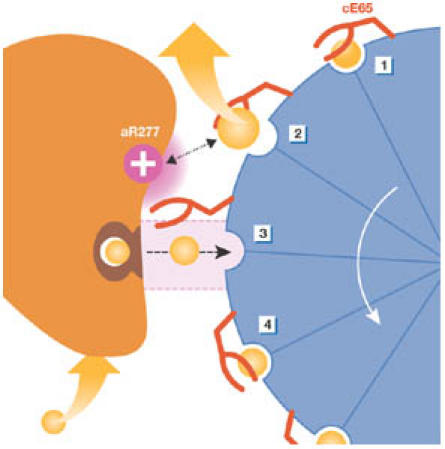Figure 4.

Model for ion translocation in the a/c subunit interface. The c ring (blue) rotates counterclockwise against subunit a (orange) during ATP synthesis. (1) The Na+ ion (orange) is coordinated by the E65, which is on the outer helix distal to subunit a, closing the horizontal gate towards subunit a. (2) On reaching the aR227 in the a/c subunit interface, electrostatic interactions stabilize the closed conformation of the glutamate and simultaneously repel the Na+ ion vertically out of its site. (3) After passing aR227, the electrostatic attraction between cE65 and aR227 is retained. This opens the gate and allows a Na+ ion to enter the site from subunit a. (4) On coordination of the incoming Na+ ion, the E65 switches back into the closed conformation and the cycle can start again.
